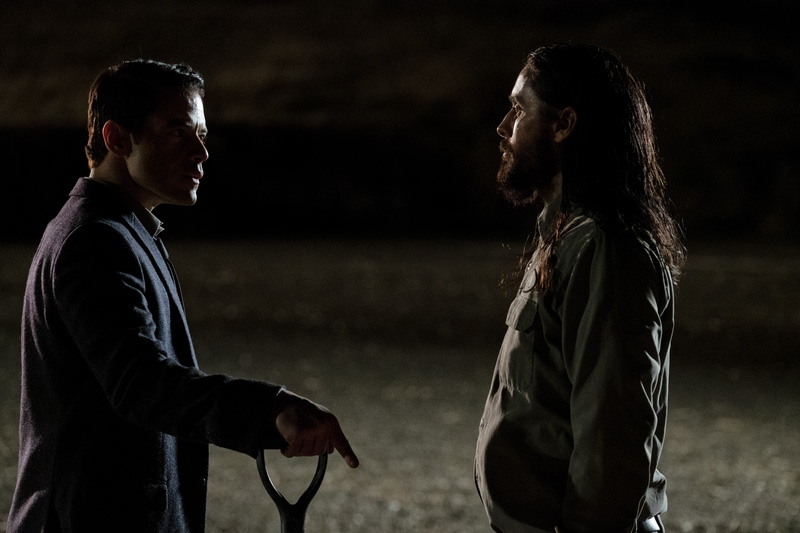Movie review: ‘The Little Things’ subverts crime thriller formula but struggles with ambiguity

(Courtesy of Nicola Goode)
"The Little Things"
Directed by John Lee Hancock
Warner Bros. Pictures
Jan. 29
By Saba Sharfuddin
Jan. 31, 2021 2:36 p.m.
Westwood, lock your doors before watching this one.
On Friday, writer-director John Lee Hancock’s newest feature “The Little Things“ premiered in select theaters and on HBO Max. The neo-noir movie not only comes with a screenplay that makes crime junkies nostalgic for films like “Zodiac,” but also features Oscar winners Denzel Washington, Rami Malek and Jared Leto.
Before the film reached the big screen, Hancock had written the script back in 1993. But while it captured the interest of people such as Steven Spielberg and Danny DeVito, Spielberg eventually shelved it for being too dark. Twenty-eight years later, Hancock was finally set to work on this film with Oscar-winning producer Mark Johnson.
[Related: Movie review: ‘Tenet’ overcomes its flaws, delivers with its action sequences and visceral visuals]
Set in 1990s Los Angeles, “The Little Things” follows Joe “Deke” Deacon (Denzel Washington), a Kern County deputy sheriff who left an unresolved past at LAPD after an obsession with a serial killer case led to his isolation and downfall. Fast forward to the present, after another serial killer leaves six victims around LA in a similar fashion to the previous case, Deacon partners up with detective Jim Baxter (Rami Malek). Both men soon obsessively try to implicate Albert Sparma (Jared Leto) with little evidence despite Deacon’s efforts to protect Baxter from his similar past mistakes.
It becomes clear toward the end that Baxter has become a mirror of Deacon’s past, something that Deacon himself hasn’t even left behind. In desperately trying to find justice where it most likely did not exist, the two men end up literally and metaphorically spending an entire night digging for answers. The parallels between Deacon and Baxter deliver a remarkable message about the timeless trauma behind crime scenes. The two could not be more opposite in their personas – neither initially wants anything to do with each other when Deacon arrives in LA. Yet, with Baxter’s increasing admiration and reliance on Deacon, it becomes clear that Baxter has become a reflection of Deacon.
Malek and Washington’s characters end up complementing each other brilliantly in this film. Washington portrays his character as standoffish and quiet, with a delivery that is monotonous compared to his previous roles in “The Equalizer” and “Flight.” Yet the reserved demeanor works phenomenally well with Malek’s ambitious and borderline conceited character.
While the feature claims to be a crime thriller, the fear is only felt during the more gruesome scenes – or when Leto is on camera. And it’s Leto’s character that really drives the film home. His facial expressions are creepily empty and his lines are filled with sarcasm and often psychoticlike humor, leaving the audience with an unsettling feeling in their stomachs that gets deeper with each of his uncomfortable stares.
Although most of the narrative follows the classic serial killer movie formula, the end manages to diverge unexpectedly. Often, most of the fun in watching crime thrillers is using subtle clues – or the little things – to try and figure out who the murderer is until they are finally revealed in the end. But here, both audience and the characters are left in the dark, with no closure about the crime.
[Related: Movie review: Spike Lee’s ‘Da 5 Bloods’ recalls America’s decades-long struggle for equality]
While such narrative direction may have been done to immerse and drive home the lasting psychological impacts these cases can have on detectives, it is misaligned with the rest of the film. With an anticlimactic and ambiguous ending, the film is an unsatisfactory slow burn, having viewers gather all the pieces only to never finish the puzzle.
It begs the question of why the film deigned to tell the story of an unsolved mystery. Yet if one goes beyond a neo-noir crime perspective, it is evident this film is about humanizing every individual, showing both the light and dark sides of even those who are meant to defeat evil. Another recurring theme was showing the danger of obsession, as Baxter’s commitment to his career begins taking over his daily life, leading to a similar downward spiral that Deacon had. Although the plot is quite simple, it does a remarkable job conveying such complex themes.
But where the plot falls, the direction of the film succeeds. Hancock packs each scene with symbolism and imagery, from the crosses Deacon drives by to the dreams of the girls he never got justice for as angels covered in white. Such religious imagery is subtle, and the film can easily function without it, yet it symbolizes something in the narrative that most crime thrillers don’t have – innocence. There is an unexpected innocence behind the women murdered and even innocence behind Beacon and Baxter’s dark sides that are driven by the lust of wanting justice for the right reasons.
Regardless of how the audience chooses to look at the imagery throughout the film, it will be the little things Hancock has sprinkled throughout the film that will leave the viewers questioning everything they thought they knew about solving a crime.

